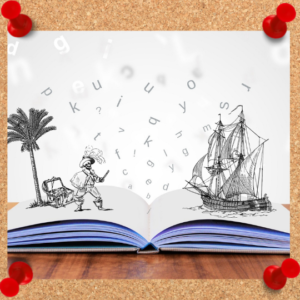Walt Disney, the man behind the magical world of Disney, is a true icon in the entertainment industry and a leader worth studying. From creating the first animated feature film to building one of the world’s most successful and beloved companies, Disney’s leadership skills and innovative thinking have left a lasting impact on the industry and society.
This blog post will delve into some of Disney’s leadership lessons we can learn from.
Walt Disney Had to Learn Leadership
Walt Disney was known for being an autocratic leader early in his career, particularly during the first years of the Walt Disney Company. Autocratic leaders make decisions unilaterally and expect their subordinates to follow their directives without question. Walt Disney was known for having a strong vision for his company and for making many of the critical decisions himself.
He was also known for being a perfectionist and having high expectations of his employees.
Walt Disney’s autocratic leadership style was evident in the company’s early days when he was the sole animator and had complete control over the creative process. He was also known for being hands-on in the production process and for closely supervising the work of his animators.
Walt Disney’s autocratic leadership style was also apparent in how he managed his employees. He was known for being demanding and expecting his employees to work long hours. He had a strong personality and was often unwilling to compromise his vision for the company.
It’s worth noting that Walt Disney’s leadership style evolved as the company grew, and he had to manage an increasing number of employees and projects. As the company expanded and became more complex, he started to delegate more responsibilities to his employees, and he also began to rely more on collaboration and teamwork.
In summary, Walt Disney was an autocratic leader during the early years of the Walt Disney Company. Still, as the company evolved, his leadership style did, too.
Disney’s Leadership Lessons: Optimistic Thinking

One of the most striking things about Disney’s leadership style was his relentless optimism and ability to see the potential in every situation. He was always looking for new opportunities and ways to push the boundaries of what was possible. This positive mindset allowed him to stay focused on his goals, even when faced with obstacles and setbacks.
As a leader, it’s essential to maintain a positive outlook and to be able to see the potential in every situation. If you take away something from Disney’s leadership lessons, take his mindset. This will help you stay motivated and inspire your team to achieve great things.
Becoming a more optimistic thinker can take practice, but it is a valuable skill that can positively impact your life. Here are a few tips to help you become a more optimistic thinker:
- Practice gratitude: Start each day by focusing on what you are grateful for. This can be as simple as gratitude for the warm sun or a good night’s sleep. Concentrating on what you are grateful for can help shift your mindset towards positivity.
- Reframe negative thoughts: When a negative thought enters your mind, try to reframe it positively. For example, instead of thinking, “I can’t do this,” try thinking, “I can do this, it might be hard, but I’ll give it my best shot.”
- Surround yourself with positive people: The people you surround yourself with can significantly impact your mindset. Spend time with positive and uplifting people who will support and encourage you.
- Practice mindfulness: Mindfulness is paying attention to the present moment. By paying attention to the present, you can learn to notice negative thoughts as they arise and choose to let them go.
- Take action: Sometimes, taking action can be the best way to shift your mindset. If you’re feeling down, try doing something that makes you feel good, such as going for a walk or listening to your favorite music.
- Challenge negative beliefs: Sometimes, our negative thoughts are based on limiting beliefs that we have about ourselves. When you notice a negative thought, ask yourself if it’s based on a limiting belief. If it is, challenge it by finding evidence that contradicts it.
- Seek professional help: If you find it challenging to shift your mindset, seek professional help. A therapist or counselor can help you understand the roots of your negative thoughts and teach you coping strategies to manage them.
- Learn from failure: Failure is a part of life, but often it can lead to negative thoughts. Try to view failure as a learning opportunity and use it to make positive changes in your life.
- Focus on the present: At times, dwelling on the past or worrying about the future can lead to negative thoughts. Try to focus on the present and appreciate what you have right now.
- Be kind to yourself: Lastly, remember to be kind to yourself. Negative thoughts and feelings are a part of being human, so don’t be too hard on yourself when they arise.
It’s important to remember that it’s impossible to think positively all the time, and that’s okay. Disney’s leadership lessons are here to help you realize that the goal is to shift your mindset towards positivity more often and use positive thinking to improve your overall well-being.
Storytelling Skills and Communication Techniques

Another essential leadership lesson we can learn from Disney is the power of storytelling. Disney’s ability to tell a compelling story is one of the reasons his company has been so successful.
As a leader, it’s essential to communicate your vision and goals in a way that resonates with your team. By using storytelling techniques, you can create a sense of shared purpose and help your team to understand how their role fits into the bigger picture. Applying knowledge from Disney’s leadership lessons starts with improving this skill.
Becoming a better storyteller can help you to communicate your vision, goals, and ideas more effectively, and it is a valuable skill for anyone looking to improve their leadership abilities. Here is a step-by-step guide to help you become a better storyteller:
- Start by identifying your audience: Before you begin telling a story, it is important to understand who your audience is and what they are interested in. This will help you to tailor your story to their needs and interests.
- Develop a clear structure: A good story should have a clear beginning, middle, and end. Think about how you can structure your story to capture your audience’s attention and keep them engaged.
- Use descriptive language: Use descriptive language to help your audience visualize the story you are telling. Use vivid adjectives and strong verbs to paint a picture in their minds.
- Use anecdotes and examples: People relate to stories based on real-life experiences. Use anecdotes and examples to make your story more relatable and to help your audience understand the key message.
- Create a sense of suspense: A good story should keep the audience guessing and create a sense of suspense. Think about how you can use tension and conflict to engage your audience.
- Practice, practice, practice: The more you practice telling stories, the better you will become at it. Try telling your story to different people and get feedback on what worked well and what didn’t.
- Use body language and tone of voice: The way you tell a story is just as important as the words you use. Use your body language and tone of voice to convey emotion and emphasize key points.
- Use humor and emotion: Humor and emotion can be powerful tools in storytelling. Use them to connect with your audience and make your story memorable.
- Be authentic: Be yourself, don’t try to be someone else. Your audience will appreciate authenticity. Share personal experiences or anecdotes relevant to your topic; they will make your story more relatable.
- Keep it simple: Keep your story simple and easy to follow. Avoid jargon or technical terms that your audience may not understand.
Following these steps and practicing regularly can improve your storytelling skills and help you become a more effective leader. Remember, storytelling is about the words you use and how you present them, so pay attention to your body language, tone of voice, and facial expressions.
Disney’s Leadership Lessons: A Company Culture of Community

Disney was also a master at creating a sense of community and belonging, which is definitely one of Disney’s leadership lessons that you should try to emulate. From the early days of the Disney studio, he fostered a culture of collaboration and teamwork. He believed that by working together, his team could achieve great things.
This approach helped to build a solid and loyal team, which was essential in creating the iconic Disney brand. As a leader, developing a sense of community within your team and fostering a culture of collaboration and teamwork is essential.
Fostering a culture of collaboration in an organization can take time and effort, but it is essential to creating a successful and productive team. Disney’s leadership lessons offer some tips to help you foster a culture of collaboration in your organization:
- Model desired behavior: As a leader, it’s essential to model collaboration and demonstrate its importance in your actions and decisions. Encourage your team members to work together and share ideas.
- Communicate effectively: Effective communication is key to fostering a culture of collaboration. Encourage open and transparent communication and ensure everyone is on the same page.
- Encourage teamwork: Creating opportunities for team members to work together on projects and tasks encourages teamwork. This can help to build trust and cooperation among team members.
- Recognize and reward collaboration: Recognize and reward team members who work well together and contribute positively to the team. This will encourage others to follow their example.
- Encourage innovation: Encourage innovation by creating an environment open to new ideas and ways of doing things. This will help to foster a culture of creativity and collaboration.
- Build trust: Building trust is essential for a culture of collaboration. Encourage team members to freely share their ideas and opinions without fear of criticism.
- Encourage diversity: A diverse team brings different perspectives, ideas, and experiences to the table. Encourage diversity within your team, and make sure everyone feels included and valued. Rumor has it, early Disney didn’t agree. Disney’s leadership lessons from his later life grew to see the importance of diversity.
- Encourage mentorship: Encourage mentorship within the team. This can help to build trust and cooperation among team members, and it can also help to develop the skills of team members.
- Create a positive work environment: Create a positive work environment that is comfortable and conducive to collaboration. This can include things like comfortable seating, natural light, and plants.
- Encourage continuous learning: Encourage continuous learning by providing opportunities for team members to learn new skills and grow as individuals. This can help to foster a culture of collaboration and innovation.
It’s important to remember that fostering a culture of collaboration takes dedication; it’s an ongoing process. However, following these tips and leading by example can create a more productive, innovative, and successful team.
Disney’s Leadership Lessons: Imagination and Innovation

Disney was also an early adopter of new technologies and was always looking for ways to push the boundaries of what was possible. He was one of the first to use synchronized sound and color in animation and always looked for new ways to innovate. This is one of Disney’s leadership lessons that should be employed in other industries.
This innovative mindset helped him to stay ahead of the curve and to create new opportunities for his company. As a leader, it’s essential to be open to new ideas and technologies and to be willing to take calculated risks. Disney’s leadership lessons tell learners that this openness to innovation can be vital to success.
Encouraging innovation is an essential aspect of leadership, as it can drive growth and competitiveness in an organization. Here are a few ways that leaders can encourage innovation:
- Lead by example: By embracing new ideas and technologies and being open to new ways of doing things, you can lead by example. This will set a positive example for your team and encourage them to innovate.
- Encourage a culture of experimentation: Encourage a culture of experimentation by providing opportunities for team members to try new things and experiment with new ideas.
- Encourage open communication: Disney’s leadership lessons encourage open communication and sharing ideas. This will help to create an environment where new ideas can surface and be discussed.
- Recognize and reward innovation: Recognize and reward team members who come up with innovative ideas and solutions. This will encourage others to do the same.
- Provide resources and support: Provide resources and support to help team members turn their ideas into reality. This can include training, mentoring, and access to technology.
- Encourage diversity: Encourage diversity within your team. Diverse teams bring different perspectives, ideas, and experiences, which can lead to more innovative solutions.
- Promote a growth mindset: Encourage a growth mindset within your team by promoting the idea that learning, experimentation, and failure are necessary steps for success and innovation.
- Be open to feedback: Be open to feedback from your team, and be willing to consider new ideas and perspectives.
- Set clear goals: Set clear goals and objectives that align with innovation; this will help team members understand how their ideas and initiatives can contribute to the organization’s overall objectives.
- Foster a sense of ownership: Disney’s leadership lessons say to foster a sense of ownership among team members. When people feel invested in a project or idea, they are more likely to be creative and come up with innovative solutions.
Encouraging innovation is not a one-time action, it’s a progressive process that requires continuous effort from leaders. By fostering an environment that encourages experimentation, open communication, and diverse thinking, leaders can inspire their teams to be more innovative and to develop ideas and solutions that can drive growth and competitiveness within the organization.
Creativity with Wonder and Magic

Finally, Disney was a master at creating a sense of wonder and magic. He understood that people are drawn to the extraordinary and that he could capture their imagination by creating an out-of-the-ordinary experience. This is an important lesson for leaders in any industry. By creating a sense of wonder and magic, you can inspire your team and capture the hearts and minds of your customers.
To apply Disney’s leadership lessons, here are a few fun ways to inspire creativity within a team:
- Host a brainstorming session: Host a brainstorming session where team members can share their ideas in a relaxed and informal setting. This can be done in person or online.
- Hold a team-building activity: Hold a team-building activity such as an escape room or a scavenger hunt. These activities can encourage teamwork and problem-solving, which can inspire creativity.
- Encourage playtime: Encourage team members to take short breaks throughout the day for “playtime,” where they can engage in a creative activity such as drawing, coloring, or playing with Legos.
- Organize a “creative day”: Organize a “creative day” where team members can take a break from their usual tasks and focus on a creative project of their choice.
- Encourage experimentation: Encourage team members to experiment with new ideas and technologies. This can help to spark new and creative solutions.
- Inspire with a challenge: Set a creative challenge for the team; this can be a design, a presentation, or a problem-solving challenge.
- Take a field trip: Take the team on a field trip to a place that is out of the ordinary, something that can inspire new ideas and perspectives.
- Encourage hobbies: Encourage team members to share their hobbies and interests with the team. This can help to spark new ideas and to create connections among team members.
- Play music: Play music in the office, or have a “jam session” where team members can play instruments together. Music can be a great way to inspire creativity and break down barriers among team members.
- Have fun: If there’s one thing about Disney’s leadership lessons to learn, consider this as most important: have fun! When people are having fun, they are more likely to let their guard down and be open to new ideas.
Remember that creativity is a process that needs to be nurtured and encouraged; it’s not something that can be forced, so make sure to create an environment that is conducive to creativity, and most importantly, don’t be afraid to have fun and experiment.
Disney’s Leadership Lessons Live On
In conclusion, Walt Disney’s leadership style is worth studying. From his relentless optimism and ability to see potential to his storytelling skills, innovative mindset, and ability to create a sense of wonder, Disney’s approach to leadership can provide valuable lessons for leaders in any industry. By incorporating some of Disney’s leadership lessons into your leadership style, you can unlock the magic of leadership and inspire your team to achieve great things.